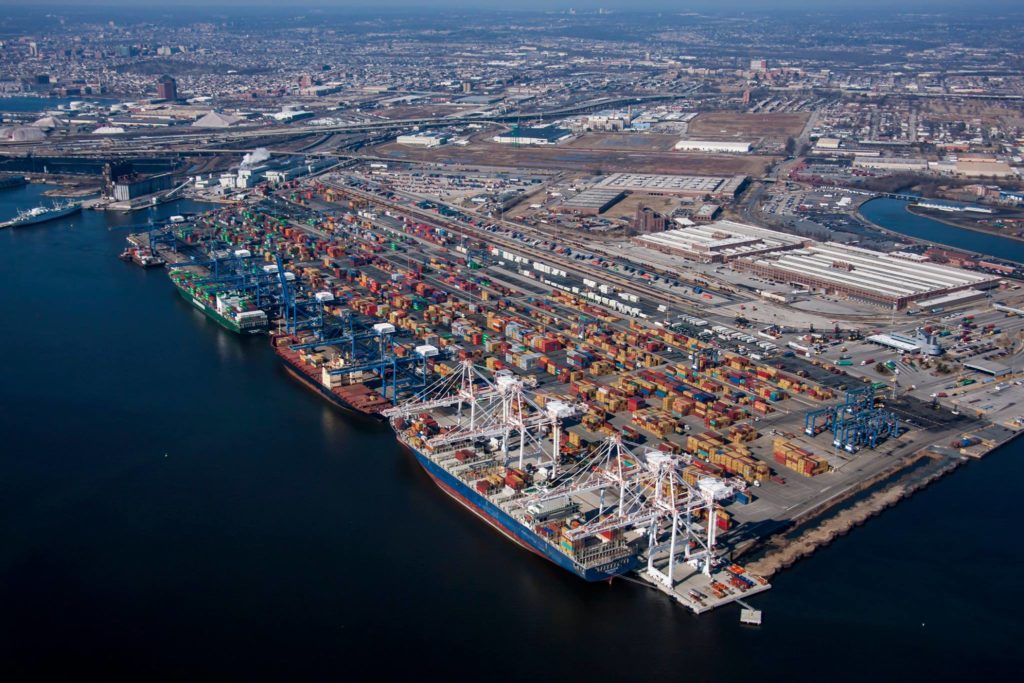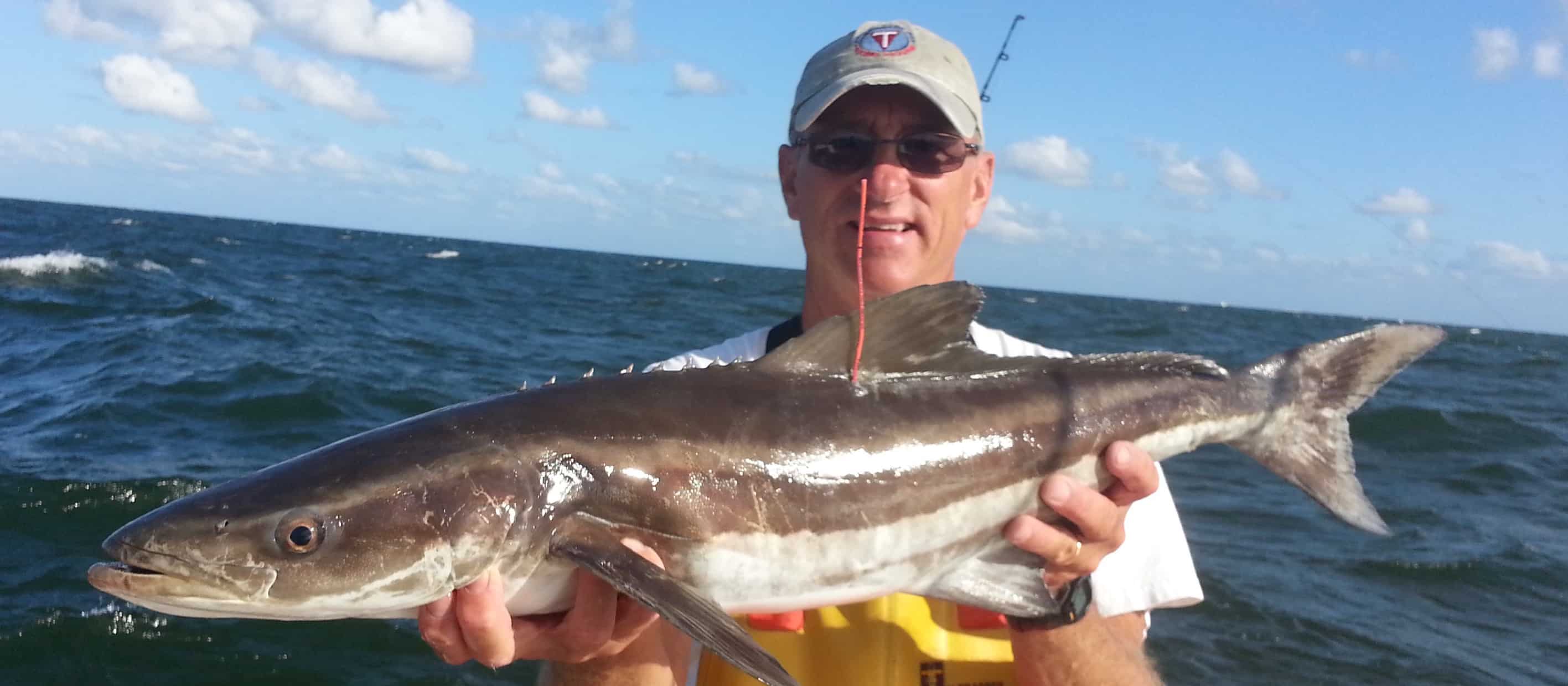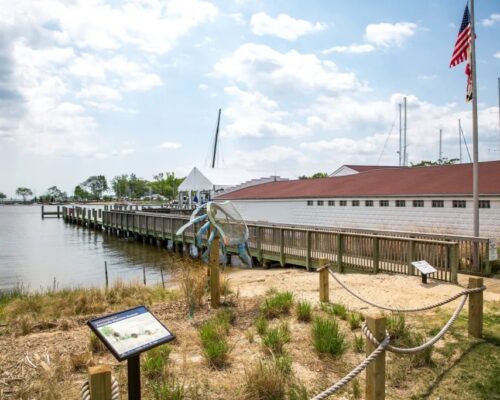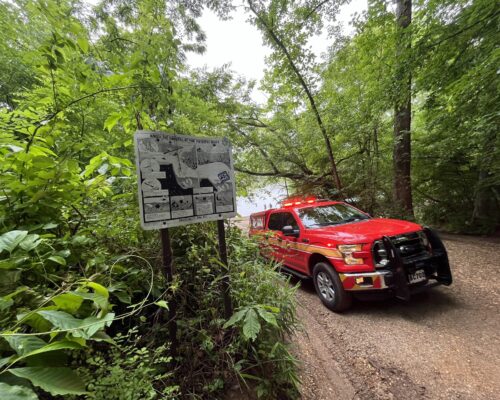Editor’s Note: This story has been updated to reflect a postponement in the crane’s departure from Thursday to Saturday.
A barge carrying three large cranes will make its way out of the Port of Baltimore and down the Bay on Saturday, and both drivers and boaters will need to adjust their plans.
The 400-foot barge Oceanus, loaded with three blue cargo-handling cranes, is scheduled to be towed from its berth at Seagirt Marine Terminal in Baltimore beginning at 7:30 a.m. Saturday, March 18. (It was originally scheduled to be moved on Thursday, March 16). It marks the end of an era: these three cranes were the original Post Panamax-style container cranes used at Seagirt since it opened in 1990.
Now it’s time for them to move on, since the Port of Baltimore now uses four new, ultra-large Neo-Panamax cranes, each 450 feet tall. The new cranes, which are fully electric with no diesel emissions, are part of a $166 million investment at Seagirt by Ports America Chesapeake. You’ll remember the video from 2021 when they squeezed under the Bay Bridge as onlookers held their breath.
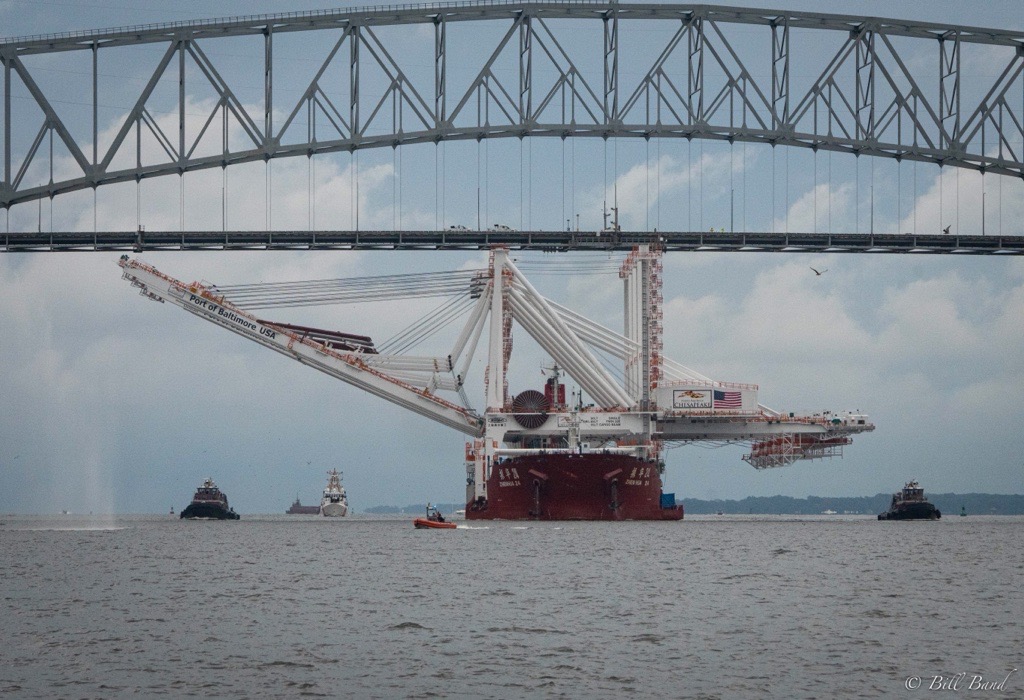
When the old, outbound cranes leave on Saturday, the Maryland Transportation Authority (MDTA) will temporarily hold all lanes of traffic, first on the Francis Scott Key Bridge across the Patapsco River around 9:30 a.m. and then on the Bay Bridge around 1:30 p.m. Both closures are expected to last 15-30 minutes.
MDTA says these times and durations are estimates only, and they depend on the vessel’s progress. The transport is weather-dependent. MDTA says the closures are necessary for drivers’ safety “to ensure that drivers are not distracted crossing these bridges during the cranes’ passage beneath the structures.”
Drivers can follow real-time updates on the barge and cranes’ progress on Twitter at twitter.com/TheMDTA or mdta.maryland.gov. To check Bay Bridge traffic conditions anytime, call 1-877-BAYSPAN (229-7726) or visit baybridge.com.
According to a U.S. Coast Guard Notice to Mariners, the barge and cranes are destined for Tampa, Florida by way of Cape Henry, Virginia. The tow with the cranes loaded on the barge is about 404 feet wide and 162 feet high. Assist tugs will accompany the vessel during portions of the towing operation. The Coast Guard urges mariners to use caution. Boaters can contact the lead tug, M/V Finn Falgout, on VHF Channel 16 or 13.
As the Port of Baltimore continues to upgrade its infrastructure, the $166 million investment is also funding 15 hybrid-electric gantry cranes, a new truck gate complex and software improvements for truckers.
“These will greatly improve efficiencies for truckers accessing Seagirt, in addition to
improving container-handling efficiencies for ships that call Seagirt, and help us bring new cargo opportunities in Maryland,” says Maryland Port Administration and Port of Baltimore Executive Director William P. Doyle.
-Meg Walburn Viviano

